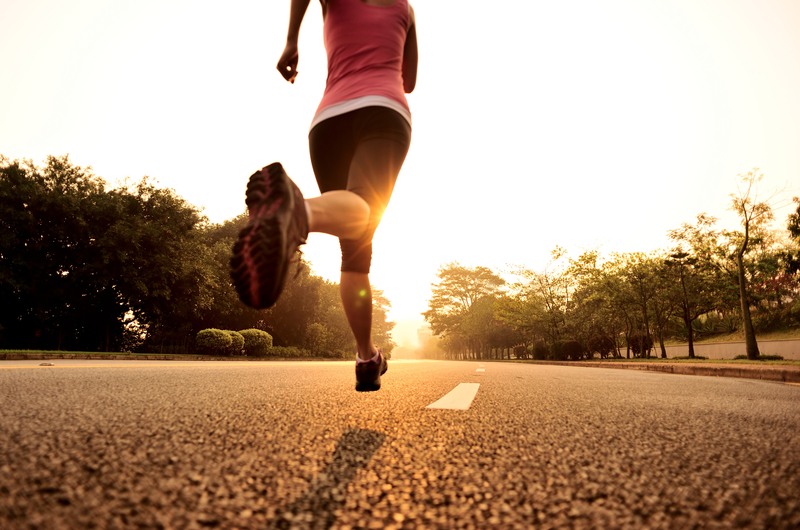When Is the “Best” Time to Work Out?

Simply put, the best time to workout is when you have time. I know that sounds like a lame answer, but regular physical activity can positively impact nearly every aspect of life, and according to the American College of Sports Medicine, the benefits of exercise are “indisputable”—no matter when you do it1. It’s hard to argue with that.
Exercise plays an important role in cardiovascular health and disease risk, carbohydrate tolerance and insulin sensitivity, strength and flexibility, mental health and cognitive function, weight management, feelings of wellbeing, energy levels, vitality, quality of life, and much, much more. In other words, exercise helps you look, feel, and move your best.
The most important thing is that you schedule exercise into your daily routine, and many folks will find that exercising first thing in the morning—before the rest of your life gets messy and takes over—is best. There may even be a fat-burning advantage to doing so.
In a recent study published in the British Journal of Nutrition, researchers from the University of Glasgow found that folks who exercised first thing in the morning on an empty stomach burned up to 33% more fat than people who did the same exercise routine after eating breakfast2. What’s more, the individuals who exercised before eating burned an additional 50% more fat for the next 8 hours after exercise. That’s what I call afterburn!
It’s important to point out that this study just looked at the acute effects of exercise—before, versus after, breakfast. Does it matter whether exercise is performed in in the fasted versus fed state over time?
According to a study published in the Journal of the International Society of Sports Nutrition, apparently it does not. Esteemed researcher Brad Schoenfeld and colleagues found that regardless of when (i.e., fasted or after breakfast) women worked out they ALL lost weight and improved body composition to a similar degree when combined with a reduced-calorie diet for 4 weeks. 3
Once again, this highlights the fact that when you exercise is much less important than actually scheduling the time to move your body.
Now, don’t think that you need to exercise hours on end to reap the benefits. More and more research suggests that approaches where you alternate between high and low intensities (often called high-intensity interval training, or HIT) is much more time-efficient than traditional aerobic exercise for improving cardiovascular fitness and health, insulin sensitivity and metabolic health, body composition, and more.4
If you’ve never done this type of workout before, you start by choosing an activity (e.g., walking/running, rowing, cycling), and after an appropriate warmup, perform 1 – 2 minutes of very challenging work (think near-maximum effort) followed by 1 minute of a light, recovery effort. Depending on your level of fitness, you can repeat this alternating pattern several times. For instance, Abbie Smith-Ryan and her colleagues at the University of North Carolina have found that men and women performing ten 1-minute bouts (with 1-minute rest periods between) or five 2-minute bouts (with 1-minute rest periods between) three times per week for as little as three weeks experienced decreased body fat, increased lean body mass, increased insulin sensitivity, and improved overall fitness—with just 60 minutes of exercise each week!5-6
Let’s not forget about resistance training. Muscle mass is a metabolic machine, accounting for 30% of total metabolic rate; it’s also the primary storage tank for the carbs that you eat. In general, the more muscle mass that you have, the more carbs that you can eat while still losing fat. What’s more, muscle is key to achieving the lean, toned body that you seek—losing fat is only half the battle.
Similar to HIT, a research team from Italy led by Dr. Antoni Paoli recently demonstrated that a time-efficient high-intensity resistance training (HIRT) workout substantially increased metabolic rate and fat burning for up to 24 hours after exercise7. What’s more, when HIRT was combined with HIT, they found significant improvements in body composition (i.e., reduced body fat, increased lean body mass) and blood lipids (e.g., triglycerides, cholesterol).8
With that said, if the best that you can do—right now—is take a walk, that’s a great start! Getting outdoors for a walk in the sunshine can be a tremendous way to reduce stress and bolster vitamin D status. Low levels of the “sunshine vitamin” are linked to excess belly fat, poor insulin sensitivity, low testosterone, insufficient thyroid function, poor mood, and more!9-12
The take-home point is that the “best” time to exercise is whenever you can fit it into your schedule given your commitments and responsibilities. That said, don’t lose sight of the indisputable benefits of regular physical activity; make it a priority by scheduling it like you would any other important appointment (e.g., doctor’s visit, child’s game, recital, etc.).
When it comes to exercise, it’s all relative. That is, it’s important that you start your exercise program in an appropriate place based on your current fitness level, your injury history, your exercise experience, your access to exercise equipment, and your fitness goals. That’s why it’s a very good idea to consult with a qualified healthcare professional prior to starting a new exercise program.






